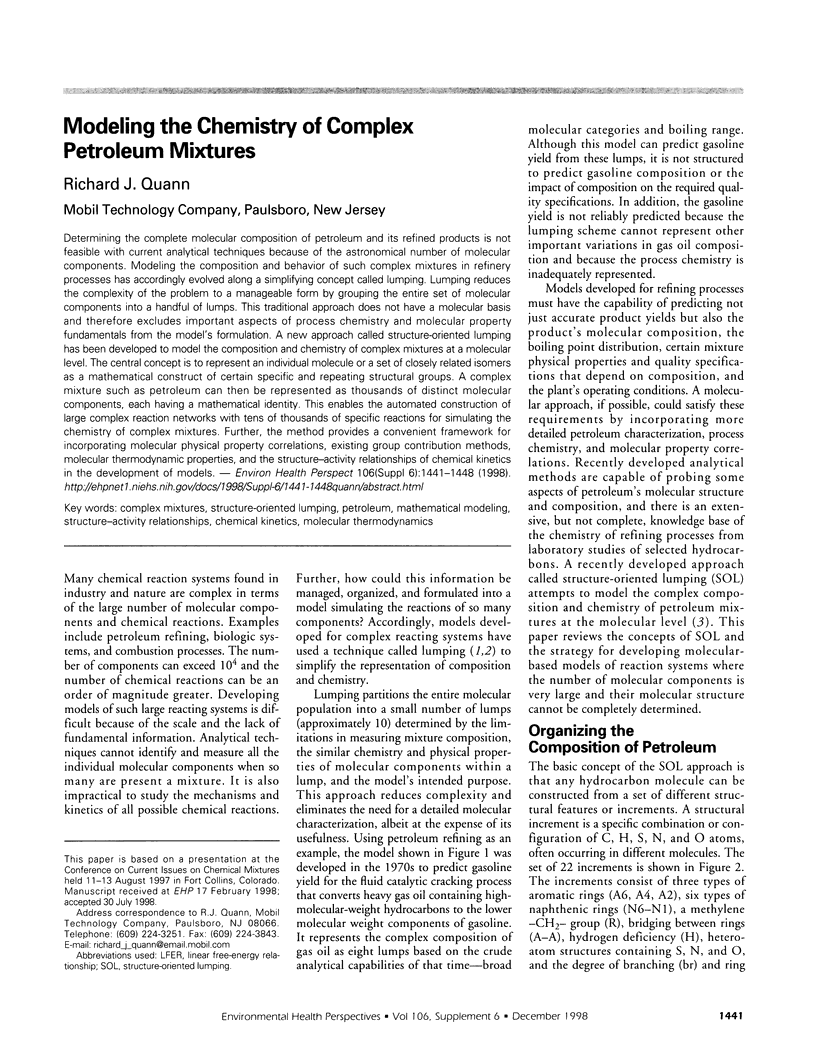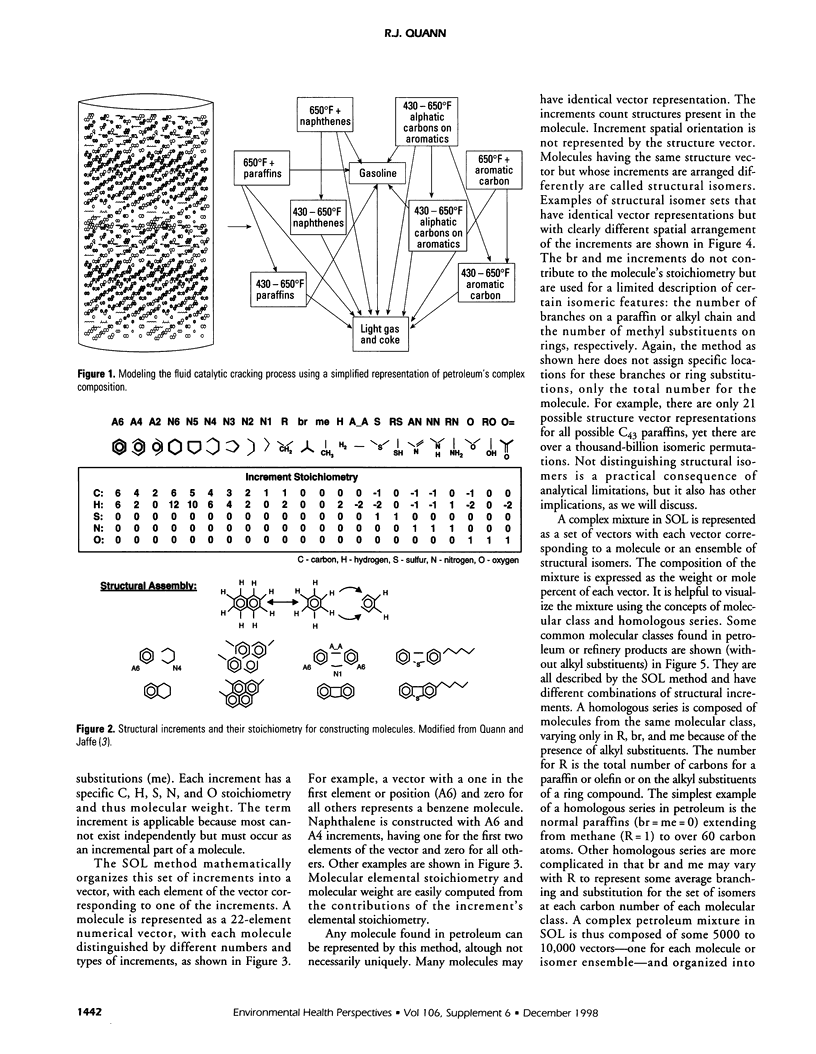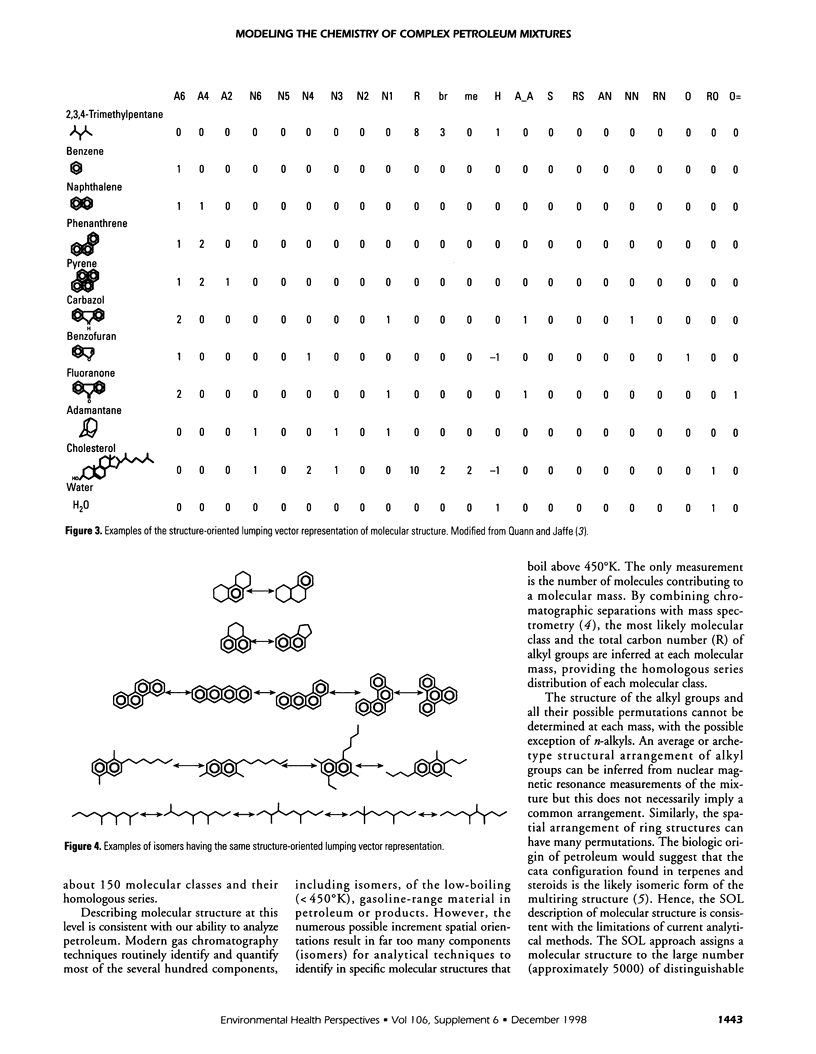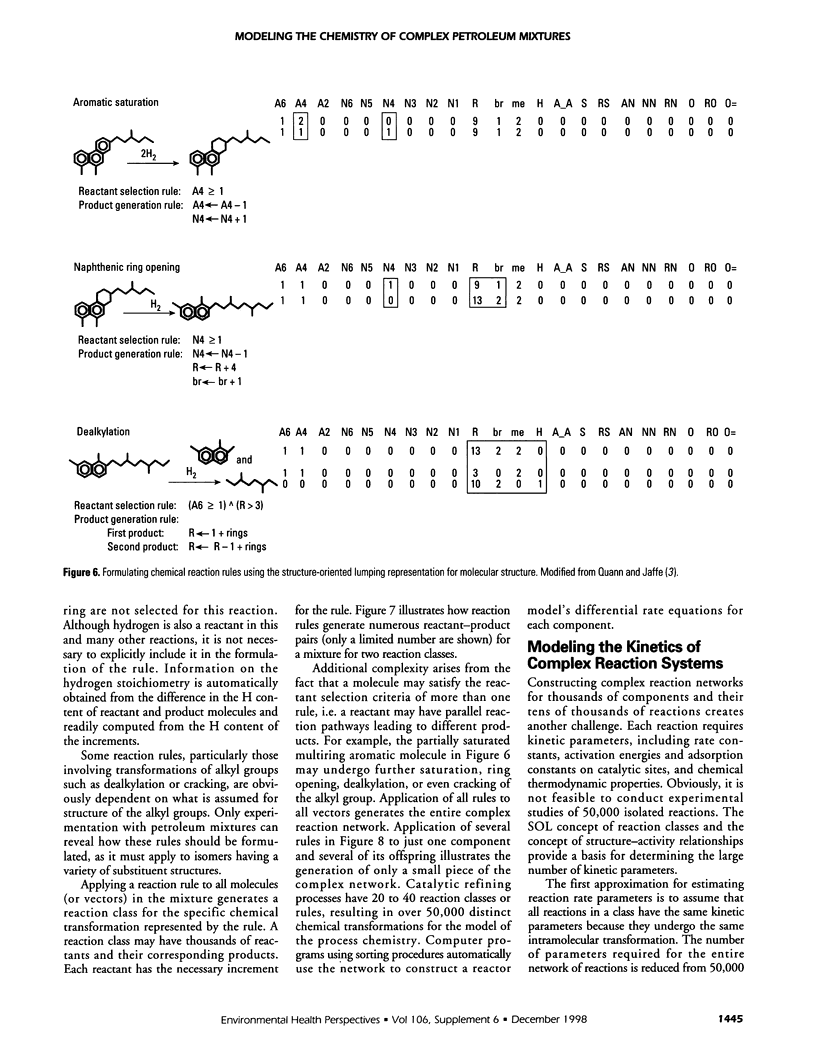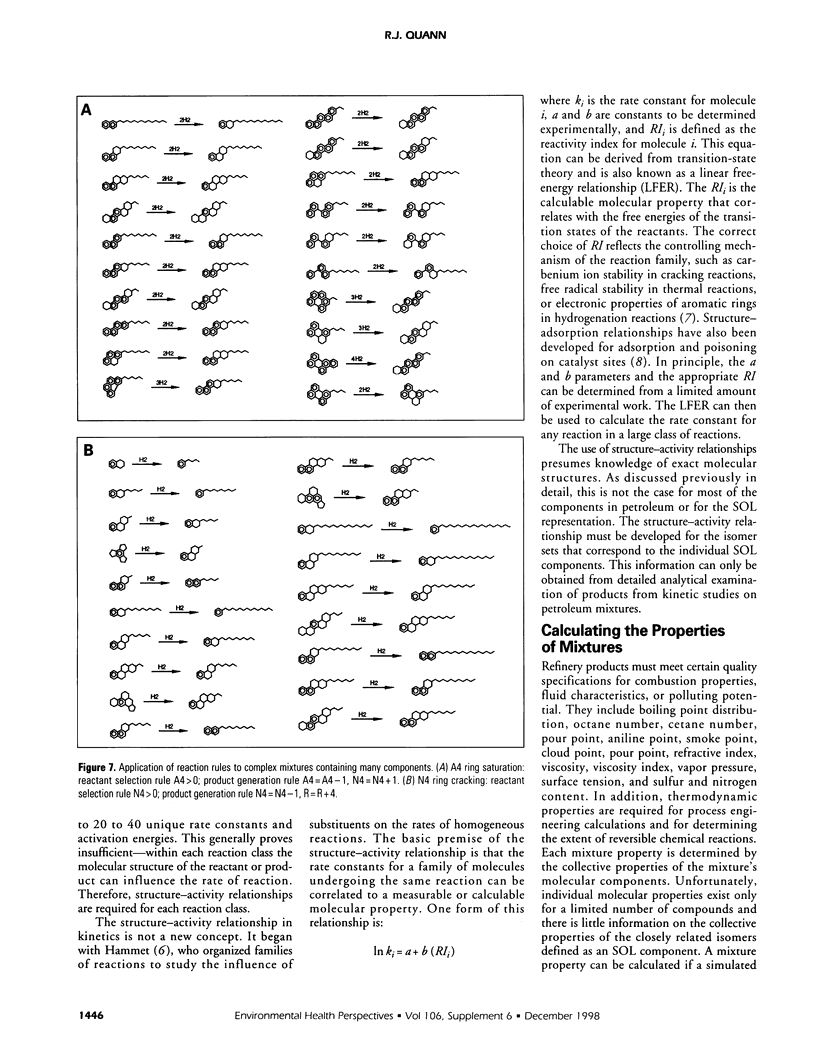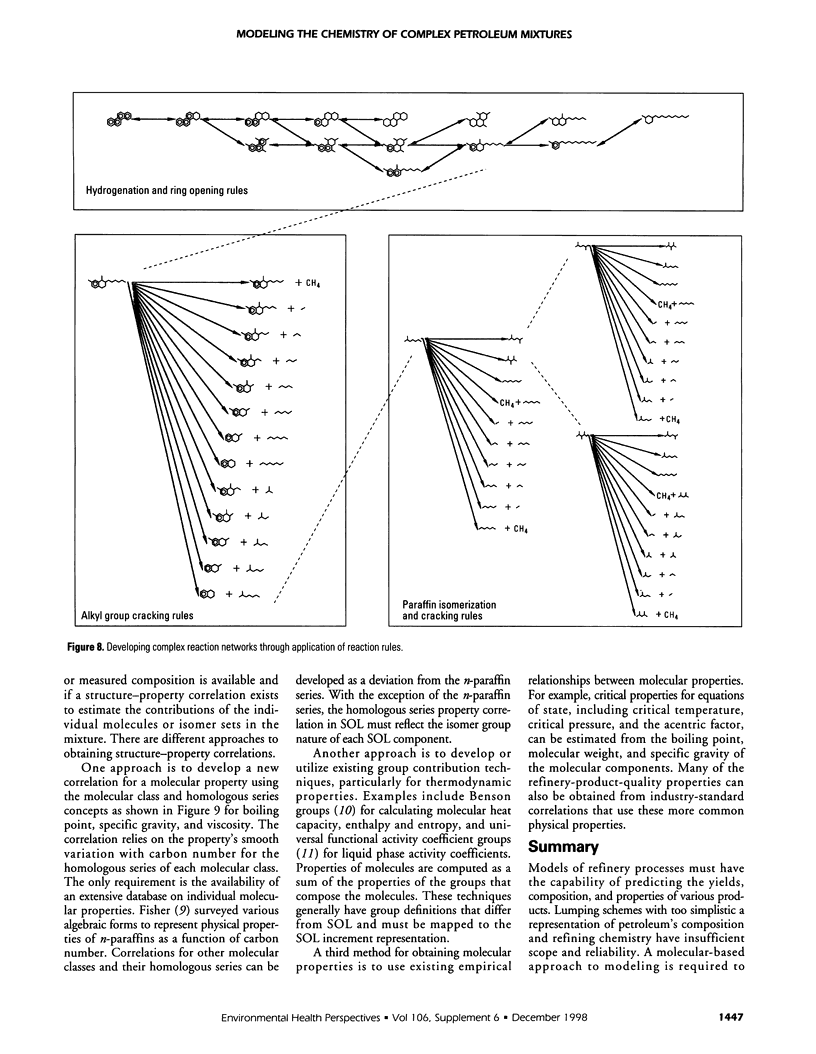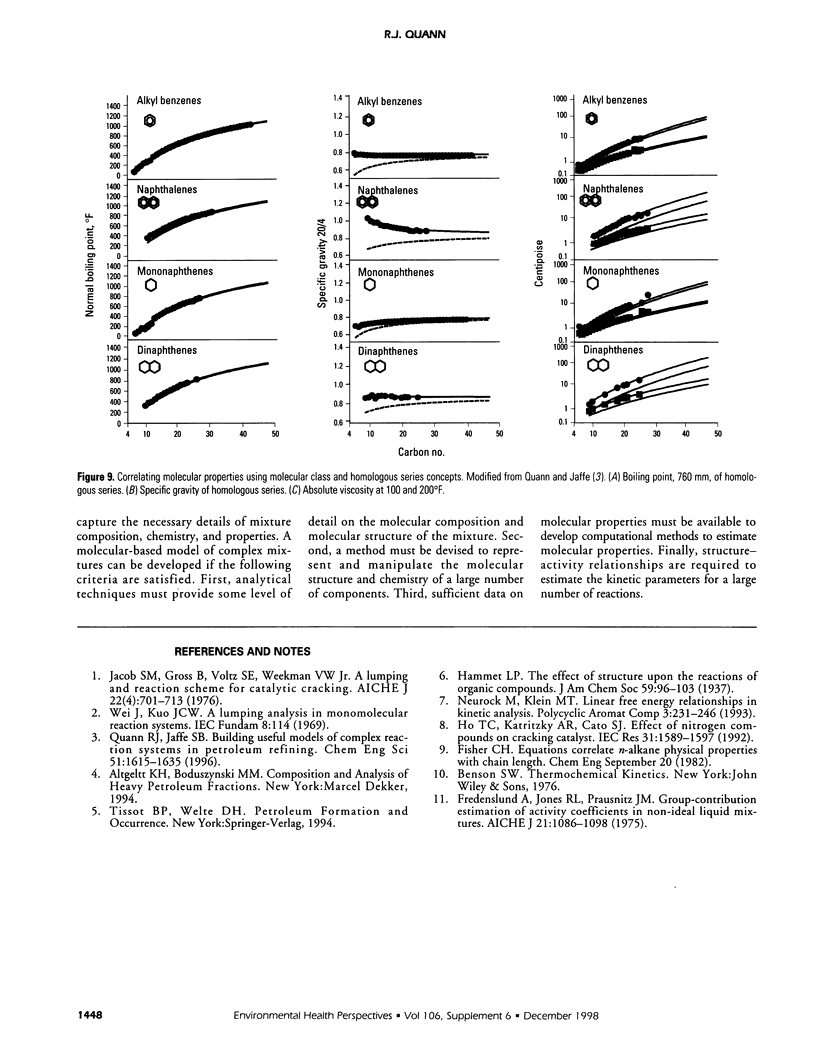Abstract
Determining the complete molecular composition of petroleum and its refined products is not feasible with current analytical techniques because of the astronomical number of molecular components. Modeling the composition and behavior of such complex mixtures in refinery processes has accordingly evolved along a simplifying concept called lumping. Lumping reduces the complexity of the problem to a manageable form by grouping the entire set of molecular components into a handful of lumps. This traditional approach does not have a molecular basis and therefore excludes important aspects of process chemistry and molecular property fundamentals from the model's formulation. A new approach called structure-oriented lumping has been developed to model the composition and chemistry of complex mixtures at a molecular level. The central concept is to represent an individual molecular or a set of closely related isomers as a mathematical construct of certain specific and repeating structural groups. A complex mixture such as petroleum can then be represented as thousands of distinct molecular components, each having a mathematical identity. This enables the automated construction of large complex reaction networks with tens of thousands of specific reactions for simulating the chemistry of complex mixtures. Further, the method provides a convenient framework for incorporating molecular physical property correlations, existing group contribution methods, molecular thermodynamic properties, and the structure--activity relationships of chemical kinetics in the development of models.
Full text
PDF